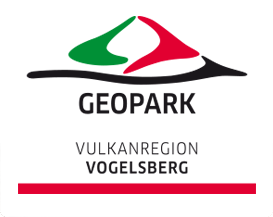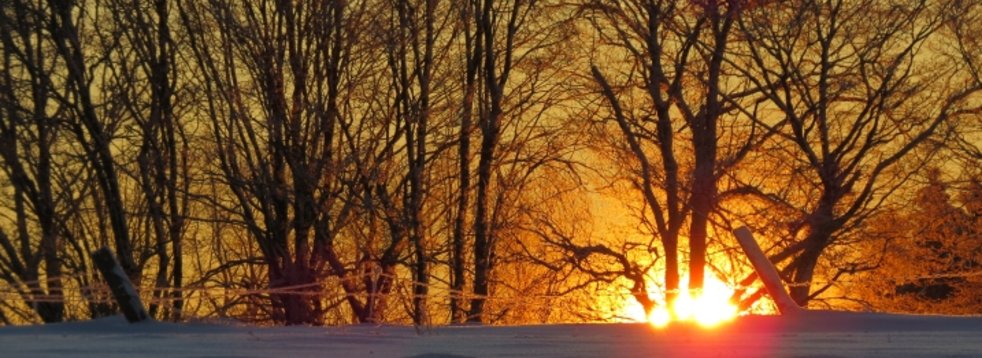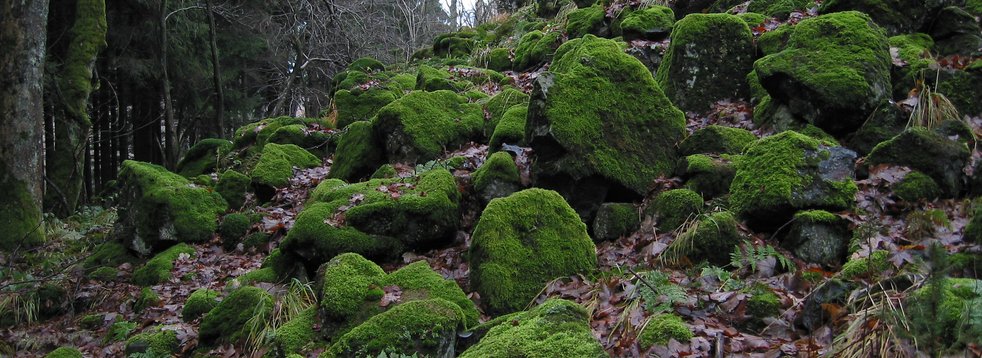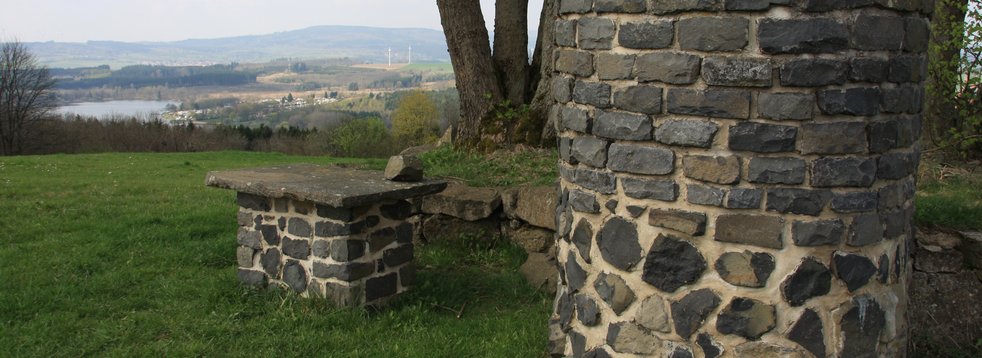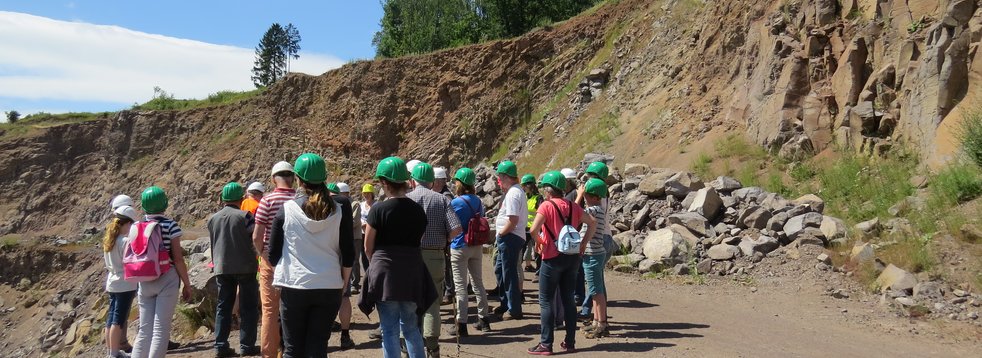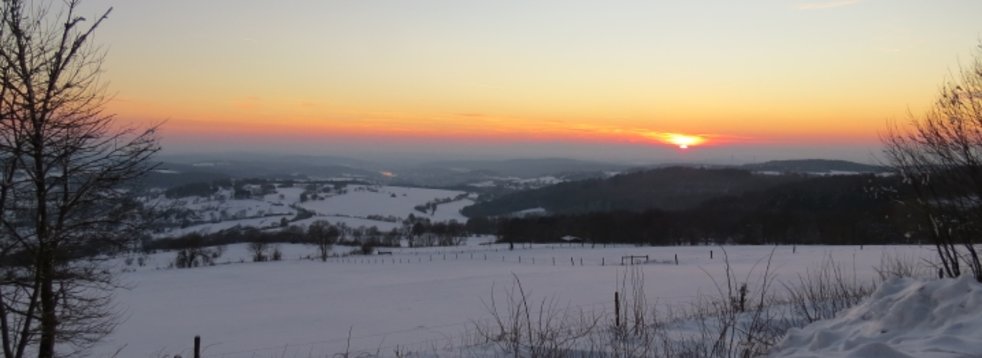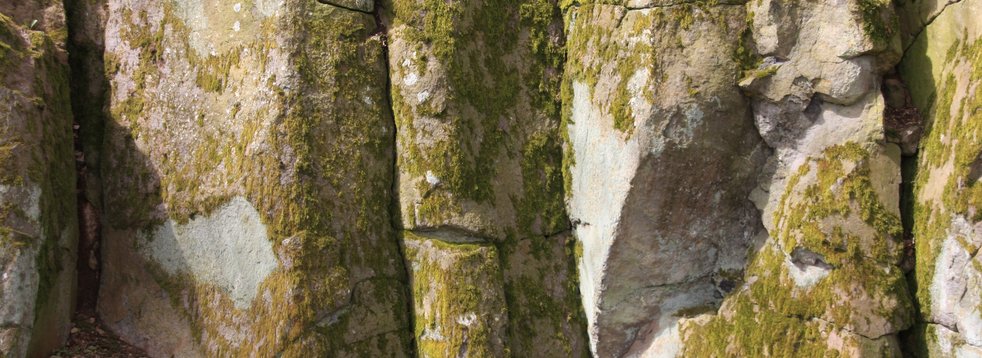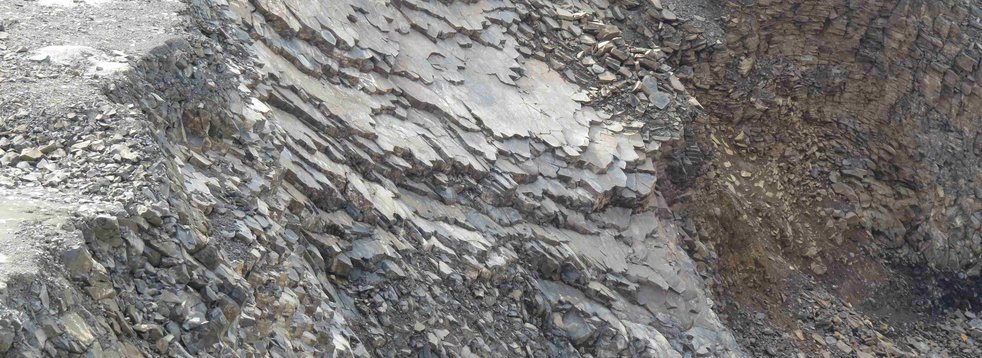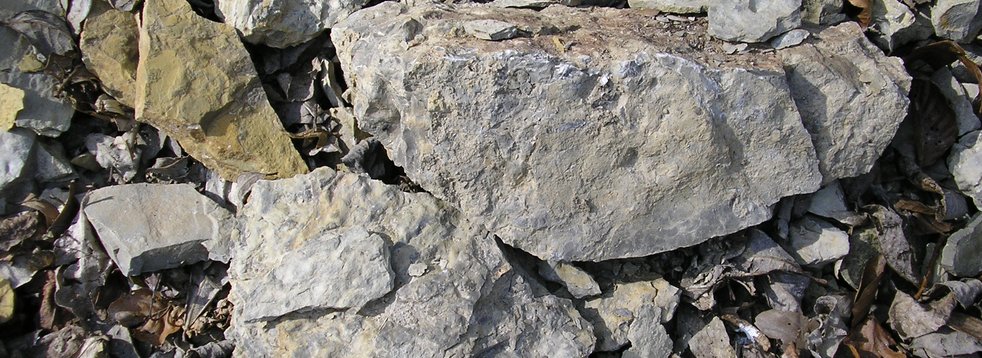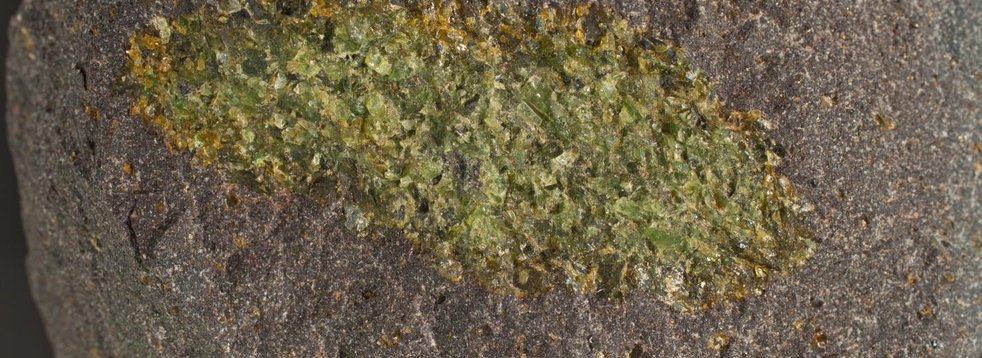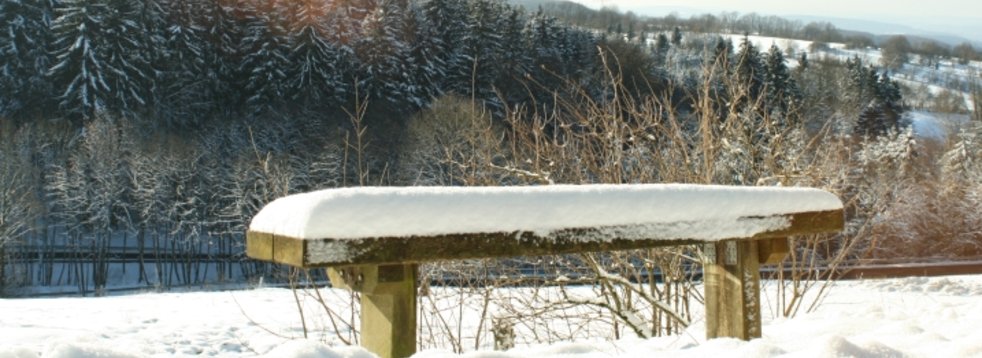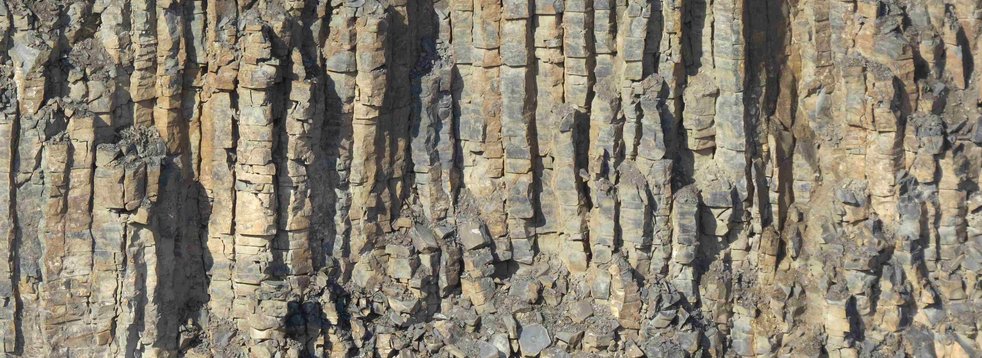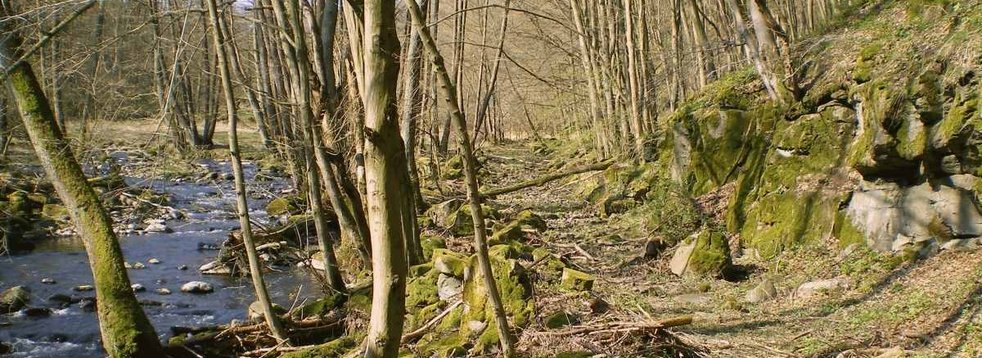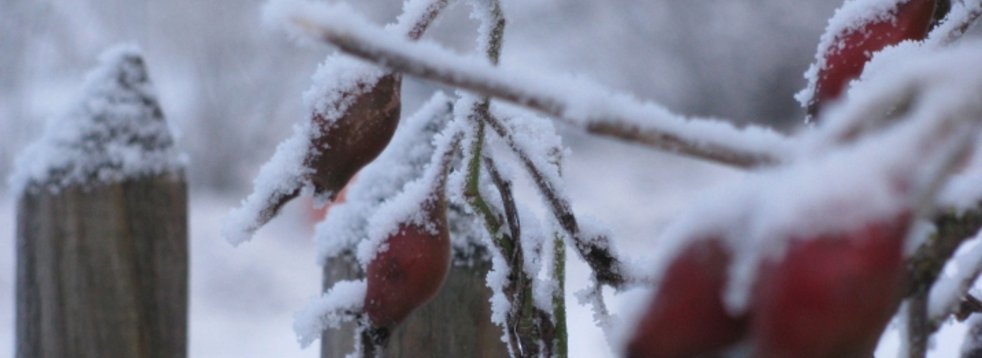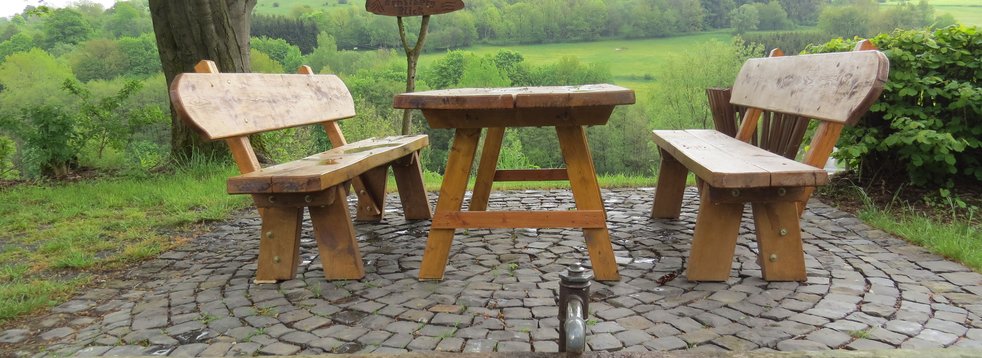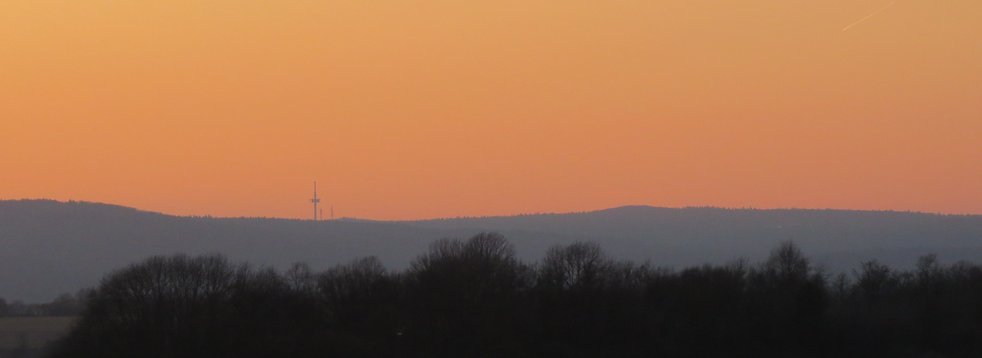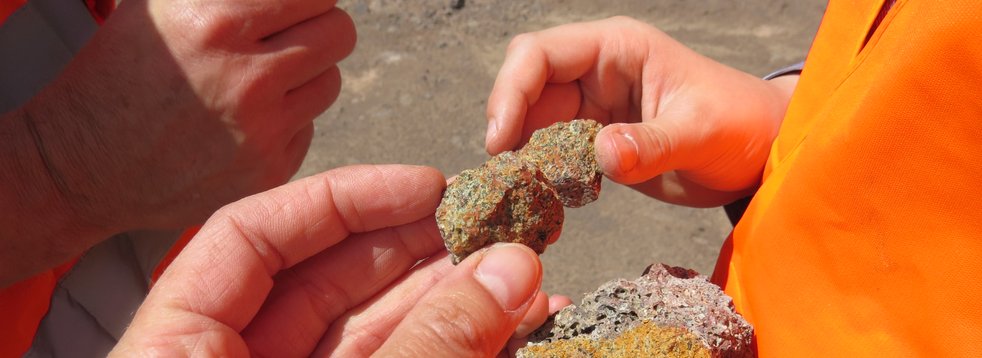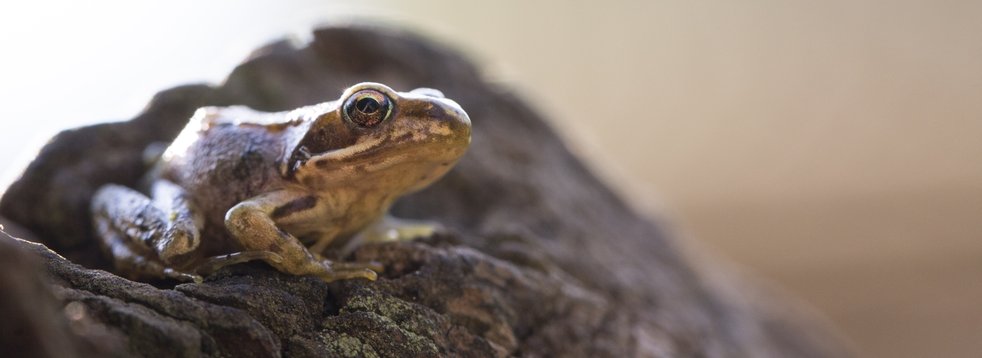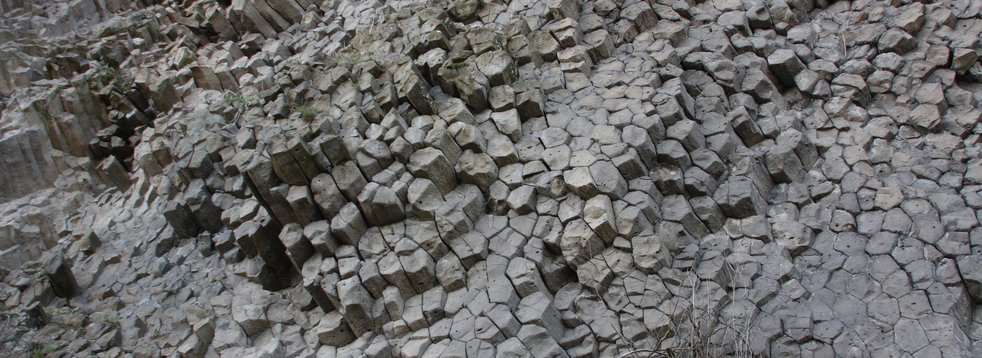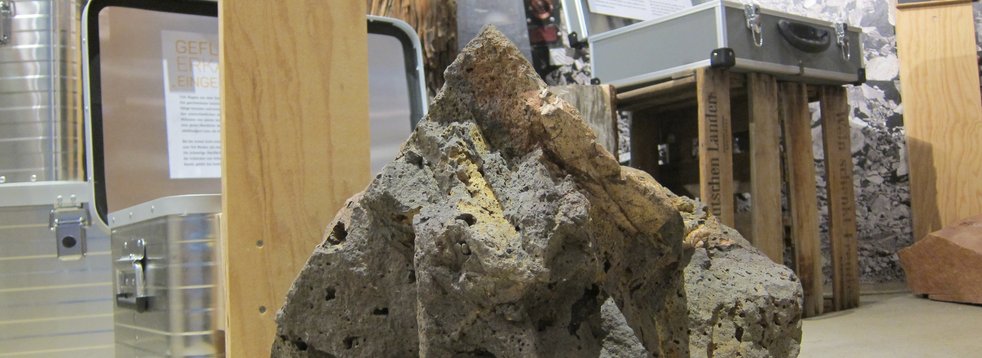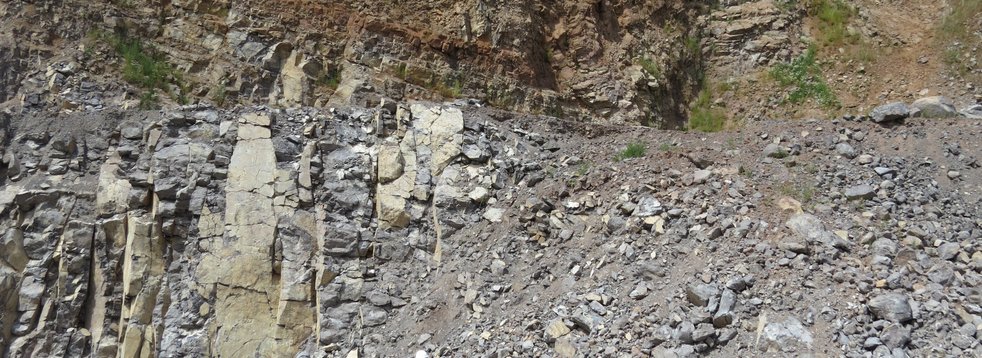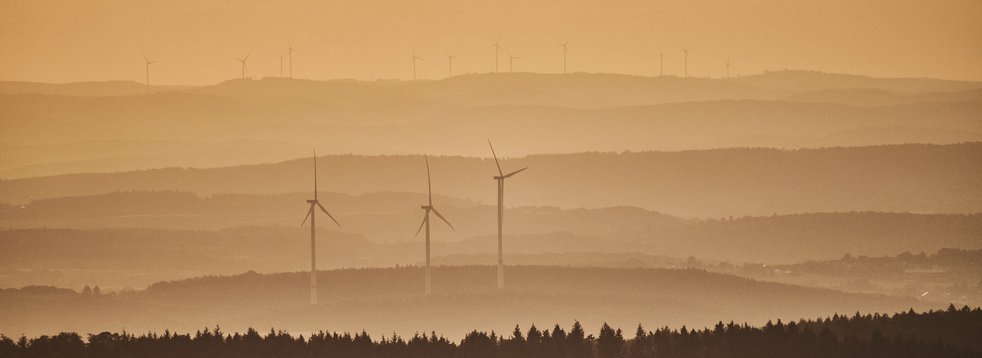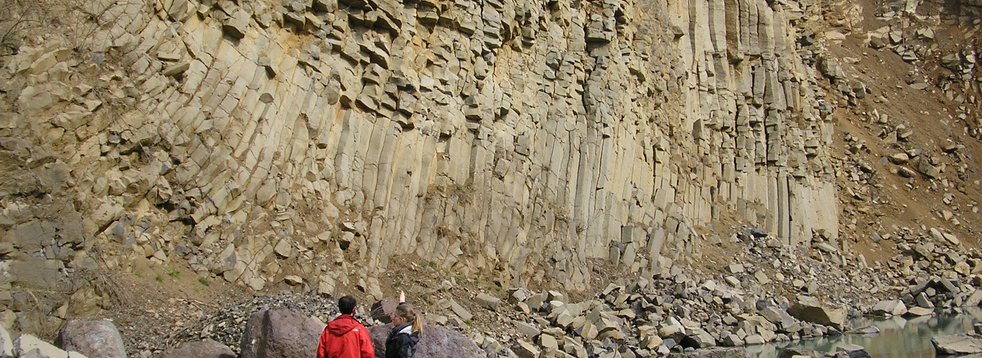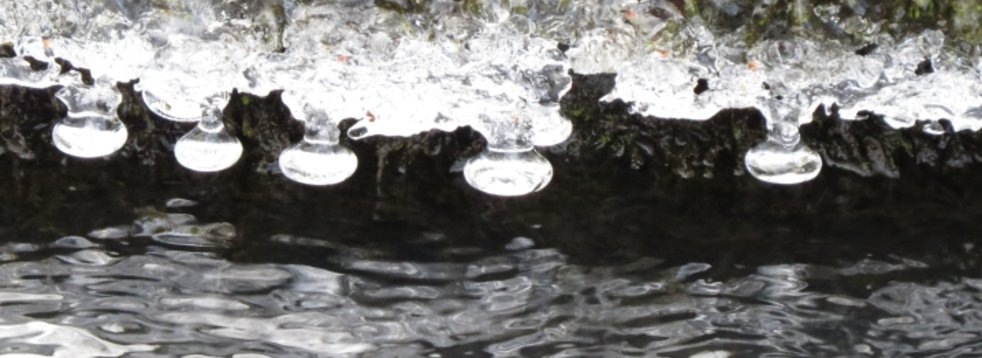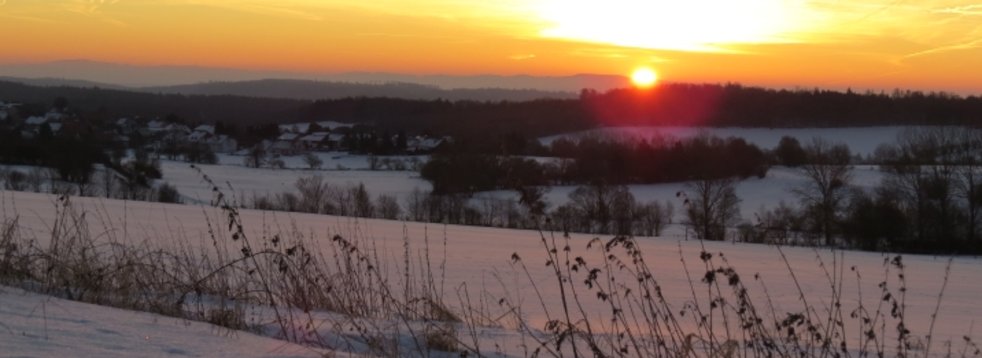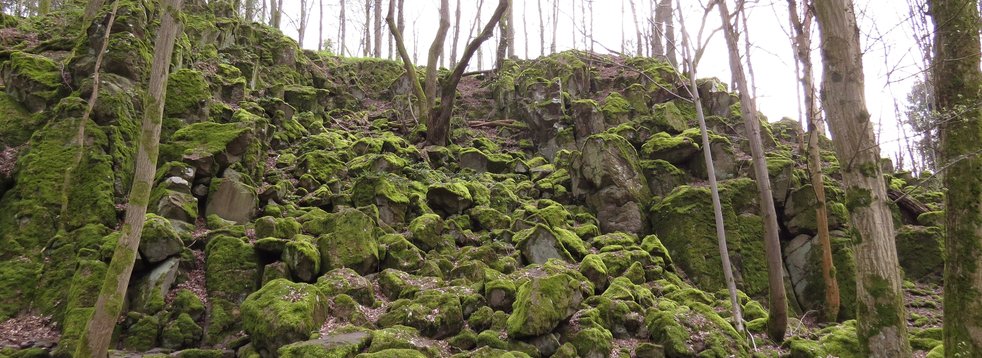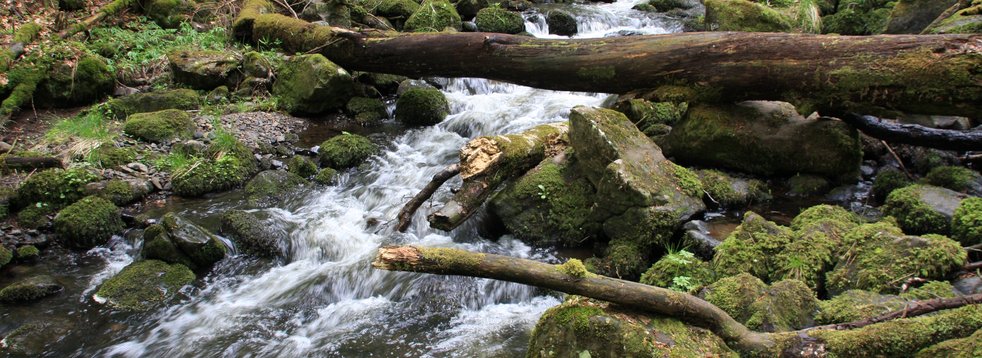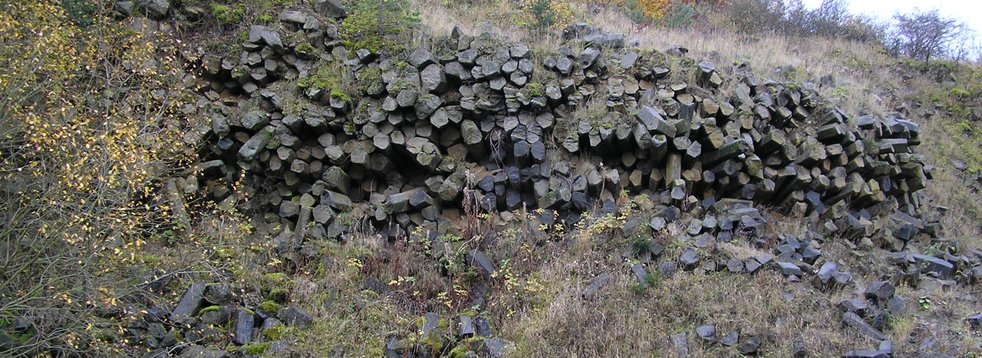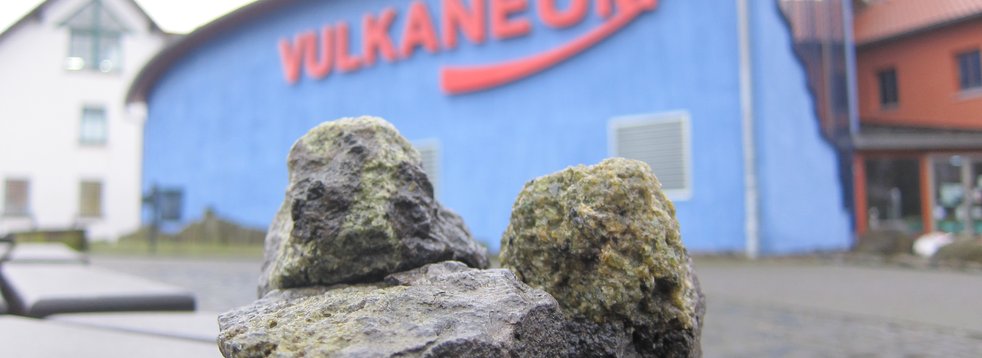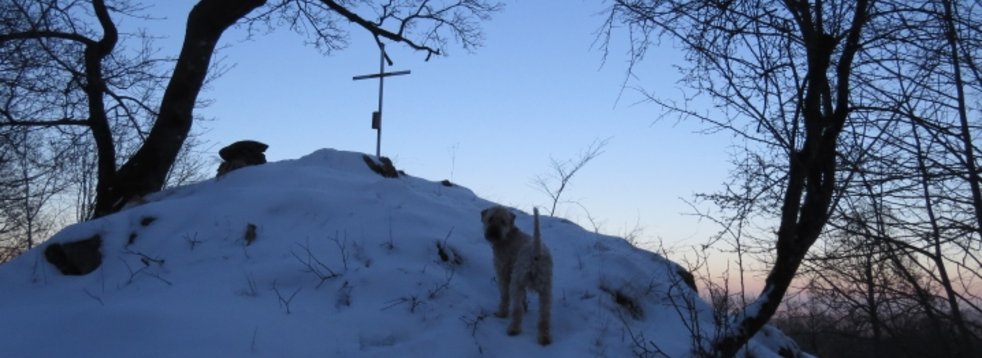Gackerstein
The geotope Gackerstein near Schotten was formed when magma rose and already existing (older) rock units broke through. The volcano that once belonged to it no longer exists. The forces of erosion have eroded the volcano to such an extent that only the vent filling - as part of the former winding channel - remains, which today appears as a crest.
The Gackerstein is part of a larger fracture structure which made the rise of magma through the earth's crust possible in the first place. This structure runs from north to south, so that magma also reached the earth's surface elsewhere, for example the southern Bilstein near Schotten and the castle hill of Ulrichstein.
Where does this come from?
Today the Gackerstein is a wonderful opportunity to enjoy a view. Its volcanic past is hardly recognizable:
The secret is not so easy to solve right away: with the naked eye no difference can be seen. If, however, the rock is cut into very thin slices so that it becomes permeable to light, clear differences in the mineralogical composition can be seen under the microscope. This means that the surrounding rocks of the Gackerstein have a different mineralogy. The rock is therefore called basanite, which means that it contains little silica (SiO2).
The occurrence of basanite at the Gackerstein, together with other geological data, allow the conclusion that this is a breach. This means that hot magma broke through older rock layers on its way to the surface.
Location, reachability & walkability
The Gackerstein can be reached via the Extratour Gipfeltour (summit tour) or from the car park at the valley station of the ski lift in Breungeshain.
- GPS N 50°30'52.7'' E 9°12'14.1''
- UTM 32 U 514458/5595872
Literature
Literature
- Ehrenberg, K.-H. & Hickethier, H. (1985). Die Basaltbasis im Vogelsberg. Schollenbau und Hinweise zur Entwicklung der vulkanischen Abfolge. Geol. Jb. Hessen (113), 97–135.
Reischmann, T. & Schraft, A. (2009). Der Vogelsberg: Geotope im größten Vulkangebiet Mitteleuropas. Hessisches Landesamt für Naturschutz, Umwelt und Geologie. Wiesbaden.

